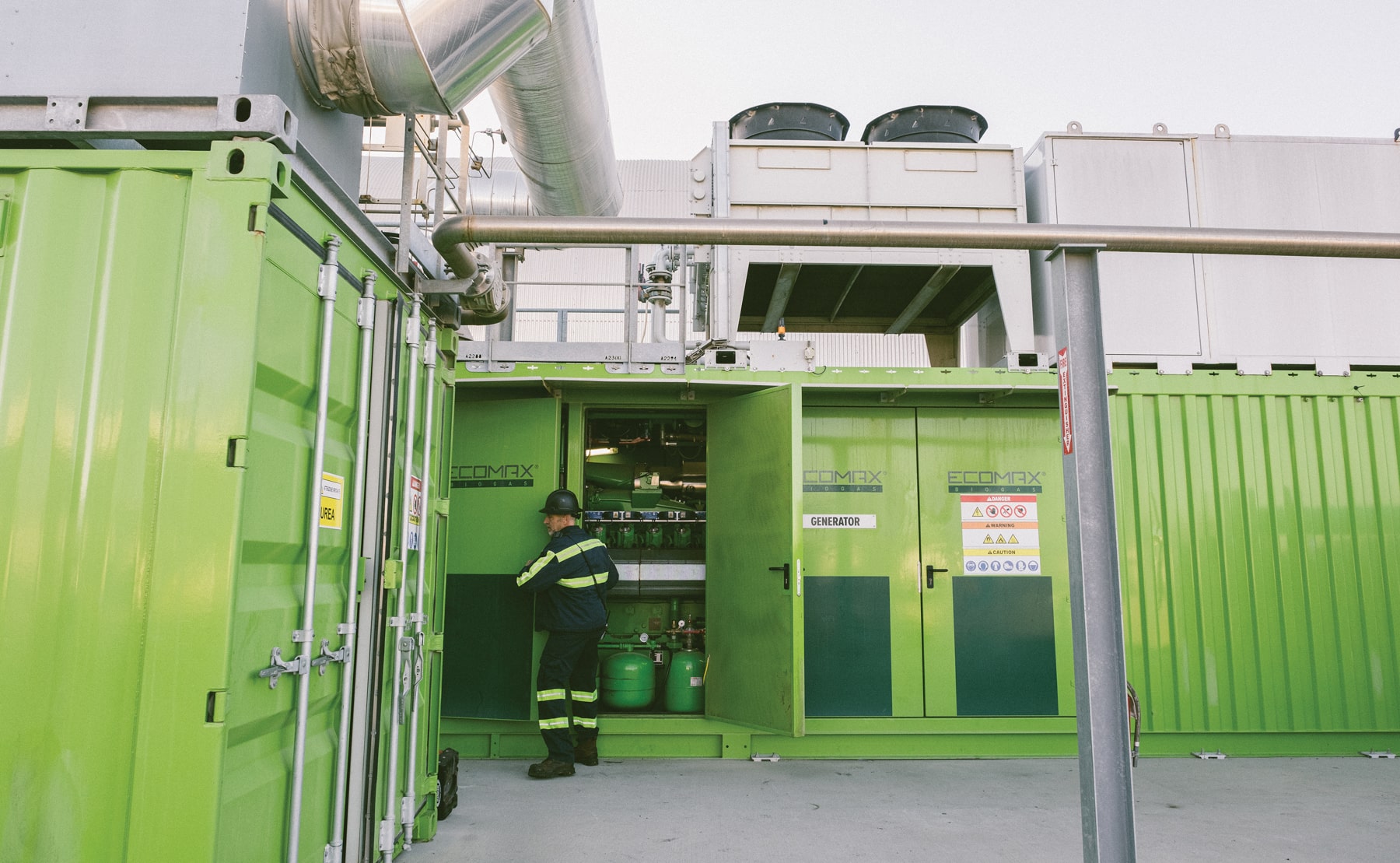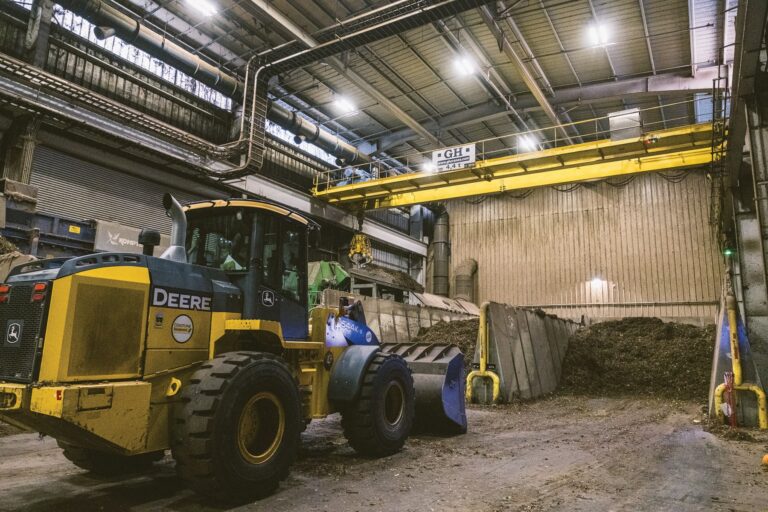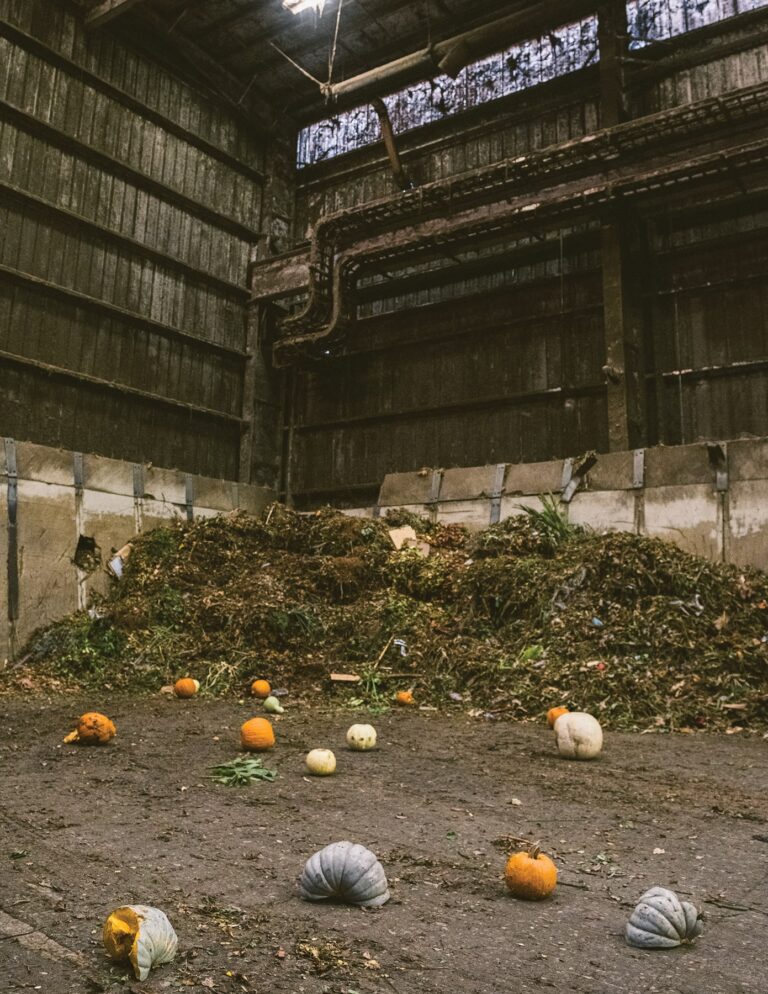
Mean, Green Composting Machine
Story by Molly O’Brien
Photography by Richard Fusillo
One of the biggest threats to the health of our planet is methane gas, which is 84 times more potent than carbon dioxide in terms of polluting the air. When food scraps are tossed into the trash, they ultimately end up in the landfill, sandwiched between inorganic materials that prevent them from properly decomposing, and sending harmful gas into our atmosphere.

A Sustainable Solution
Americans are throwing away 30–40 percent of our nation’s food supply every year, according to the U.S. government. This equates to 80 billion pounds of food — about 219 pounds per person. Food disposed of in the trash cannot decompose and wreaks havoc on our ozone. Government data show 20 percent of California’s methane gas comes from landfills. This is wholly preventable and requires little effort from consumers.
“If you bury food in a landfill, which is, unfortunately, historically, what’s been done, it creates methane gas which escapes into the atmosphere,” says Tom Gratz, the U.S. Sales Manager of global green-tech company Hitachi Zosen Inova in San Luis Obispo. “Methane gas is much worse for the environment than carbon dioxide is, actually. It’s a short-lived climate pollutant that causes this heat-trapping blanket effect on our earth, contributing to global warming.”
Composted food waste, on the other hand, decomposes into nutrient gold that can be used to revitalize dead earth and permit new plant life to grow. Composting isn’t a new concept and in California, since January 2022, it has been a legally enforced and fineable mandate through the Short-Lived Climate Pollutant Reduction Strategy. Its goal is to reduce greenhouse gas emissions to achieve a cleaner and healthier environment by diverting a majority of organic waste from landfills by 2025 and saving, for human consumption, at least 20 percent of edible food remains. This law applies not only to local residents but also to property managers and owners, private and public businesses such as restaurants, educational facilities, and state and federal facilities like prisons.
Large, food-generating businesses and organizations are required to participate in “edible food recovery,” meaning they must donate for human consumption or compost all raw, cooked or processed substances, ice, beverages or ingredients they would typically throw away that can still be safely eaten. Those who violate the mandate face fines. Specialized food recovery organizations, like food banks and dedicated community-based organizations, manage this recovery service.

Efficient Energy
San Luis Obispo County residents and restaurants, among other businesses, can turn their food scraps into energy. It’s a process called waste-to-energy technology, and it’s happening at the Kompogas plant near the San Luis Obispo airport. Operated by global green-tech company Hitachi Zosen Inova, the facility uses dry anaerobic digestion to convert waste to power.
“Our factory here is eating the food that nobody else will,” says Tom. He compares the factory and its process of aerobic digestion to a “big metal stomach that has living bacteria in it.”
The Kompogas plant puts all the food waste and fat or greases from fast food restaurants’ deep fryers, among other organic waste materials, into a controlled environment and extracts energy from them. The result is carbon-neutral biogas, which converts waste to compost. It is used as a renewable fuel for generating green energy in the form of electricity. It can be used to power a generator and, once fed into the San Luis Obispo region’s electrical grid, provide electricity to the county. The plant produces enough energy to power around 600 homes.
“It’s a much bigger thing than compost [for us],” says Tom. “It just happens to come off the plant, and we put it back into the soil, but our main focus is preventing greenhouse gas emissions and producing renewable energy.” In recent months, Kompogas donated 40 yards of high-quality organic compost to City Farm SLO to support its farming practices. Wineries are also on the receiving end of compost from Kompogas.

A Shared Responsibility
Every household in San Luis Obispo County should have three disposable waste bins: a blue bin for recycling, a gray one for trash and a green one for organics, such as yard and food waste. Residents and restaurateurs should share their kitchen spoils, separating from the trash their food scraps and leftovers. Those that may be close to expiring, are unwanted or unneeded can be donated to community organizations that fight hunger.
“San Luis Obispo County has been a frontrunner in enacting this organics diversion before it was even a law — we’re ahead of the game,” says Tom. Though he acknowledges the SLCP Reduction Strategy has created a noticeable improvement in the use of food waste bins, he believes there are always ways to improve.
“The best thing residents can do to work with us and protect the environment is make sure they’re putting food waste in the appropriate bin,” says Tom. “Also, keep contaminants out of the bin — no plastics, no Coke cans in the green bin — keep it organic.”
A little thoughtfulness when it comes to waste can have profound impacts on our planet and those who inhabit it.

